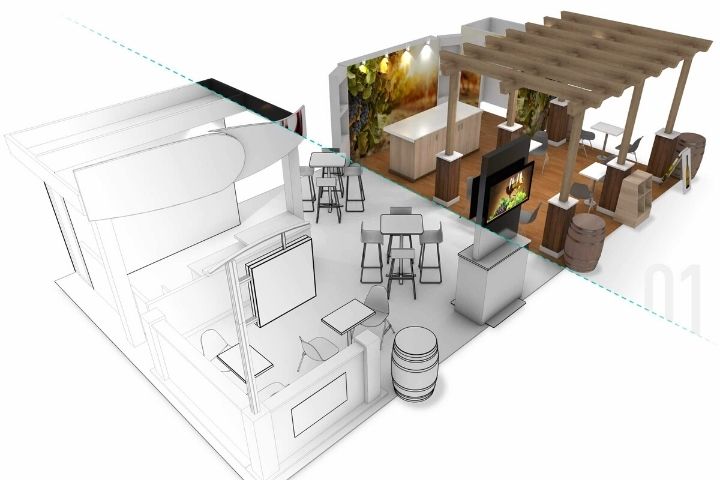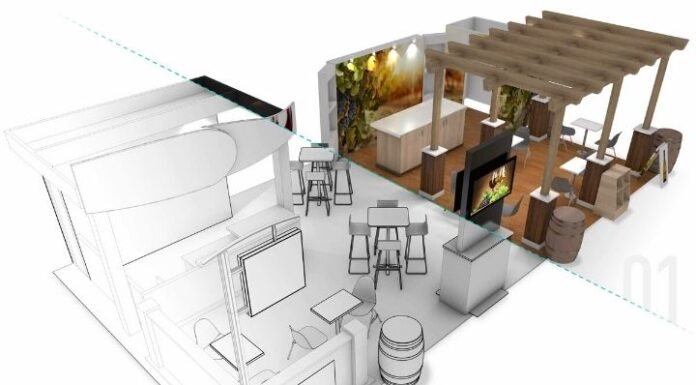The world of product design and development is changing all the time. This is due to many different things, but the most influential factor is the continuing advancements of technology and the development of the internet. With the introduction of new products, software and systems, the way that we bring product designs and sketches to life has changed greatly over the past number of years. One of the most common methods of doing this is 3D rendering.
3D rendering was introduced to the world of product design and development a number of years ago and has grown in popularity since. Nowadays, the process 3D rendering is used in many different areas of life, especially in many business fields.
It is extremely effective at bringing three-dimensional images to life, allowing a business to see what their initial idea and design would look like as a final product. The process of 3D rendering involves creating a variety of images, from a non-realistic sketch to a realistic three-dimensional image. For example, a 3D cosmetics configurator will allow a cosmetics brand to see one of their products, such as a bottle of perfume or a makeup palette, come to real life in digital form.
If you are looking to learn more about 3D rendering or how a 3D cosmetics configurator can bring an image or product into digital life, then here are the steps that are involved in the process of 3D rendering.
Understanding The Client’s Vision
The first and probably one of the most important steps involved in the process of 3D rendering is understanding the client’s vision. A client’s vision involves their ideas and plans for their product. When a client thinks of a new product, they will usually have an image in their mind of what they want the end product to look like.
They will also have an idea of what colour and material that they want the product to be, as well as any designs or fonts that will be displayed on the product. In order to build a model of a product, the person who completes the process of 3D rendering will have to understand all of the clients’ ideas and plans for the product. The person who brings a clients’ ideas and vision to life is known as a 3D artist. These are trained professionals, who are typically very creative and artistic, and will know exactly how to turn a clients’ initial ideas into a final image.
To do this the 3D artist will use a number of plans and sketches, as well as reference images of similar products that have been provided by the client, to create a 3D rendering image of the product. This may take the 3D artist some time and they may have to create a number of mock-ups in order to determine that they have met the client’s vison.
3D Modelling
Once the 3D artist has made sure that they understood the client’s vision and ideas correctly, they will begin on the next stage of 3D rendering. This following stage in the process of 3D rendering is 3D modelling. In this step, the image or product that is to be brought to life is created into a digital model. During this process, the 3D artist will use a specialized 3D modelling software system in order to create a realistic and life like digital model of the client’s product. There are a number of different specialized 3D modelling software systems available on the market that a 3D artist can use to create a model of a product. Many 3D artists will try and test out several different 3D modelling software systems in order to find one that they find easy to use and allows them to work quickly and efficiently. It is important that a 3D artist finds a 3D modelling software system that they feel comfortable using, as it will allow them to create the best possible result for their clients.
Materials And Texturing
When developing a 3D model of a new product design, a 3D artist will focus on a number of different aspects of the model. For example, they will focus on the materials and texturing of the product. In doing this it will allow the 3D artist to create a realistic and life like 3D model of the product. I
n order to get the materials and texturing correct on the 3D model of the product the 3D artist will go back and forth with their preferred software system, creating different layers on the system that will help to make the 3D model look as realistic as it can be and as similar to the real product as possible.
Lighting
Another important step involved in the process of 3D rendering, is that of lighting. The lightening of a 3D model is what can make the model look either life like or not. This stage of the 3D rendering process involves the use of software algorithms to imitate natural or professional light sources, such as either sunlight or camera lighting.
Rendering
The next stage of the process of 3D rendering is the actual act of generating the 3D image. In this stage of the rendering process, the 3D artist will use their preferred 3D modelling software system to convert the product into a high-quality image. The time that it takes a 3D artist to render can take anywhere from a couple of minutes up to several days or even a week. The time it takes to render depends greatly on the complexity and quality of detail that the client desires, so as a client you must be patient.
Refining
Once the 3D image has been rendered by the 3D artist, they will then go through a rigorous process of refining the image. This involves thoroughly inspecting every detail and aspect of the rendered image to make sure that it is perfect. This will allow the 3D artist to see if the 3D model matches the visions and the ideas that were initially set out by the client in the first stage of the 3D rendering process. During this stage of the process the 3D artist will contact the client so they can inspect their work. If the client is not satisfied with the quality of the work that the 3D artist has provided them with, the artist must then go back and refine the 3D image.
This involves altering or making minor adjustments, whether it is to the lighting, the colours used or the material of the product. Making these minor adjustments will allow the artist to meet the client’s expectations and will ensure that the rendered image is as realistic as possible for the client.
From this guide hopefully you are now aware of the complex process that is involved in 3D rendering. So, if you are looking to get one of your business products rendered into a 3D image or model, make sure to get in touch with a professional 3D artist. They will work hard to take the necessary steps needed to make all of your product visions and ideas come to life in a three-dimensional digital form.














